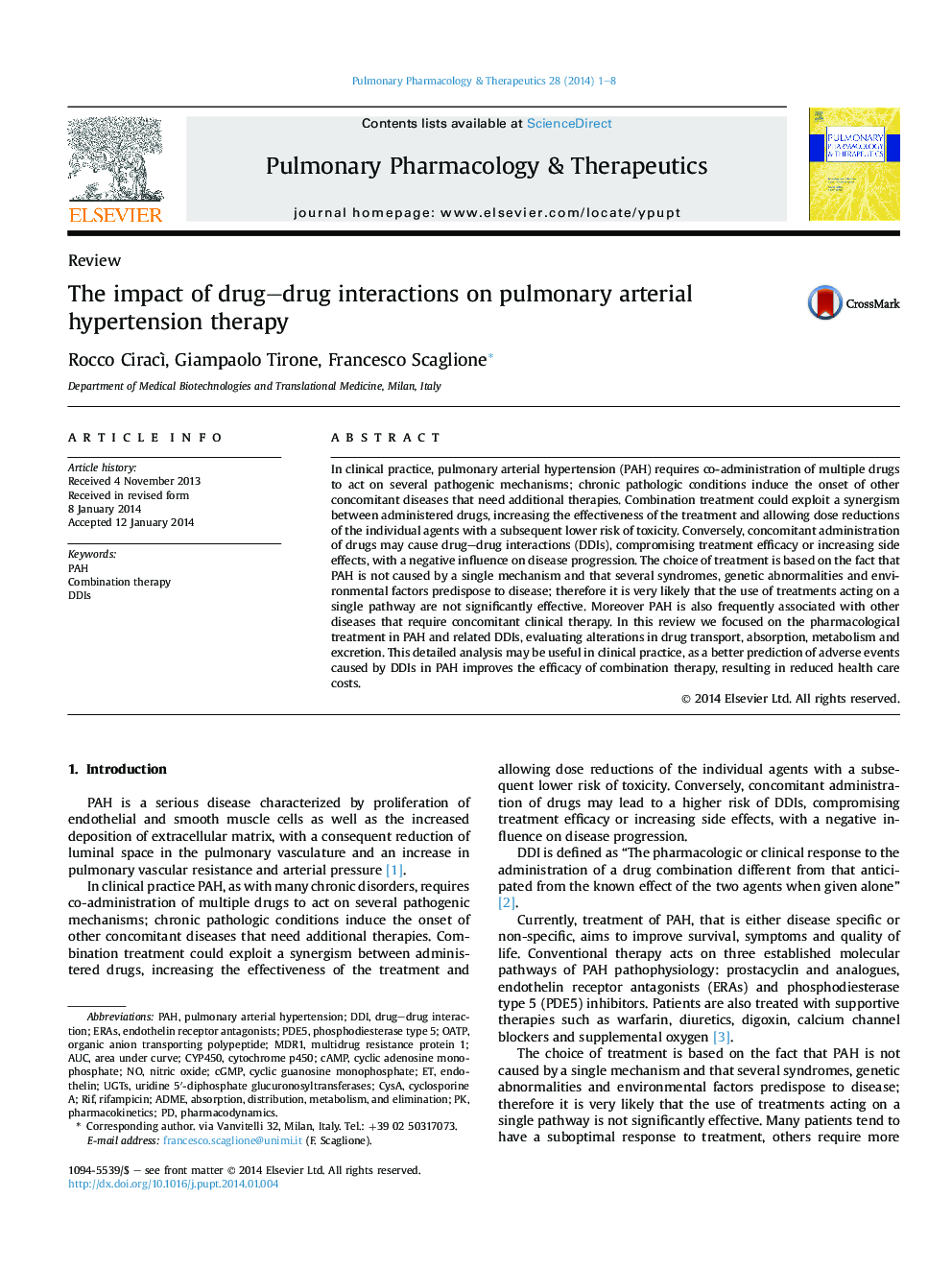| Article ID | Journal | Published Year | Pages | File Type |
|---|---|---|---|---|
| 2567019 | Pulmonary Pharmacology & Therapeutics | 2014 | 8 Pages |
In clinical practice, pulmonary arterial hypertension (PAH) requires co-administration of multiple drugs to act on several pathogenic mechanisms; chronic pathologic conditions induce the onset of other concomitant diseases that need additional therapies. Combination treatment could exploit a synergism between administered drugs, increasing the effectiveness of the treatment and allowing dose reductions of the individual agents with a subsequent lower risk of toxicity. Conversely, concomitant administration of drugs may cause drug–drug interactions (DDIs), compromising treatment efficacy or increasing side effects, with a negative influence on disease progression. The choice of treatment is based on the fact that PAH is not caused by a single mechanism and that several syndromes, genetic abnormalities and environmental factors predispose to disease; therefore it is very likely that the use of treatments acting on a single pathway are not significantly effective. Moreover PAH is also frequently associated with other diseases that require concomitant clinical therapy. In this review we focused on the pharmacological treatment in PAH and related DDIs, evaluating alterations in drug transport, absorption, metabolism and excretion. This detailed analysis may be useful in clinical practice, as a better prediction of adverse events caused by DDIs in PAH improves the efficacy of combination therapy, resulting in reduced health care costs.
